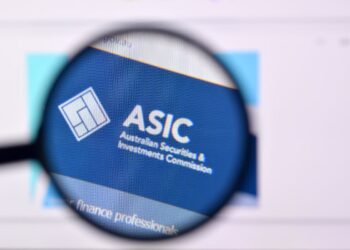Australians love their cars. And they love their roads too. Yet to date, the association between paying road tolls, and the opportunity to invest in a fund that has a stake in those toll roads and generates an income from them, is not so widespread. But awareness is growing as two funds in the market stake their place.
Infrastructure funds have a broad classification, and include not just those that invest in roads, airports, bridges and railways, but also those with investments in public utilities, power stations and telecommunications.
According to Colonial First State’s general manger of investments John Pearce, traditionally infrastructure funds have been offered solely to the wholesale market because of two main characteristics of the investment.
“This type of investment is illiquid, it is very chunky and requires large capital outlay and also, the time for payback is quite long. So the investors who are typically attracted are those with large amounts of money and patient capital,” Pearce says.
But infrastructure funds have reached a level of success in the retail market in the past few years, offered by managers that package them into a listed vehicle, offsetting the illiquidity issue.
Macquarie Infrastructure Group (MIG) is the largest infrastructure fund on the market with close to $6 billion under management.
Part owned by the Macquarie Bank, MIG listed on the Australian Stock Exchange (ASX) in December 1996 with a public issue of 300 million stapled securities, raising $300 million. With a mandate to principally invest in toll roads in developed western countries, to date the fund has invested in toll roads across Australia, Canada, Spain, England, Germany and Portugal.
MIG Division director Dennis Eager says historically the attraction of investing in infrastructure funds with principle investments in toll roads for the retail, and wholesale, investor has been the robust growth in traffic.
“Traffic numbers have not been affected by economic conditions, and MIG is unique as tolls go up by more than inflation,” Eager says.
And while the long-term investment nature of infrastructure funds, usually about a 10-year investment minimum, favours those with ‘patient’ capital, it is also the performance prospects of long-term investing that appeals to those retail investors who have the time to wait.
“Toll road investments are long-term defensive cash nature, as toll roads are monopolies and isolated from competition,” Eager says.
“There is reasonable security in cash forecasts, and it is still growing at rates it has grown in the past.”
Eager says he has witnessed an identifiable growth in interest and awareness of infrastructure funds since MIG listed, a growth in line with the number of quality infrastructure investments made available as the Federal Government coped with levels of debt by selling off its assets.
“Australia has been through the biggest phase of infrastructure privatisation in the past 10 years, and there are no public listed equivalents to MIG in other countries, so this is not just a new infrastructure class in Australia but also in the world,” Eager says.
Because of the long-term nature of infrastructure funds, MIG provides a fully developed financial model of the fund detailing all its assets. It also produces cashflow forecasts for the company in the years ahead, so that, as Eager says, financial planners can make their own predictions on the projected results.
Unlike other sections of the alternative investments market that has experienced increased competition in the past year, such as ethical and hedge funds, infrastructure funds do not occupy a huge slice of the Australian market.
The Australian Infrastructure Fund (AIF), managed by Hastings Funds Management, is MIG’s direct competition as a transport focused infrastructure fund. It is a relatively smaller player, with a current market cap of $230 million, and was floated just three months after MIG, in March 1997.
AIF is a domestic-based transport infrastructure fund, with principle assets in six Australian airports, a Sydney toll road, two ports and a couple of railroads, says AIF chief operating officer Mitchell King.
“Investments in the past have included Auckland Airport, but the fund is now a domestic-based infrastructure fund, however, the mandate does include looking into international assets,” King says.
AIF has 11,000 shareholders across Australia, as well as a number of international shareholders. The fund also has a number of big name wholesale investors including Rothschild, Colonial First State, AMP and Barclays Global Capital.
The growth of AIF has also followed an incline similar to that of MIG, with the fund successfully completing a placement last May for $22 million of new securities.
“Popularity has increased as investors are confronted with the prospect of earning seven to eight per cent above equities. So alternatives have come under sharp focus. There is also a lot of capital looking to get invested,” King says.
“Investors are looking towards alternatives as a nice place to be.”
While investor awareness of infrastructure continues to grow as the market becomes more familiar with toll roads over time, and with the privatisation of Sydney Airport helping to nudge investors in the alternative infrastructure direction, King has set his sights high for AIF.
“In the next three years, we hope to grow beyond $500 million, and then through to one billion,” he says.
CFS’ Pearce says at the moment the manager’s focus on infrastructure funds does not include offerings to the retail market, instead concentrating on wholesale and investing funds on behalf of institutional mandates. But he agrees there will be certain segments of the alternative class that could prove attractive to the retail investor.
“I think there will be a place for it [infrastructure funds] in the future, but generally speaking they will be wholesale and institutionally focused. But there will be particular assets that might engage retail investors, such as toll roads and airports,” Pearce says.





